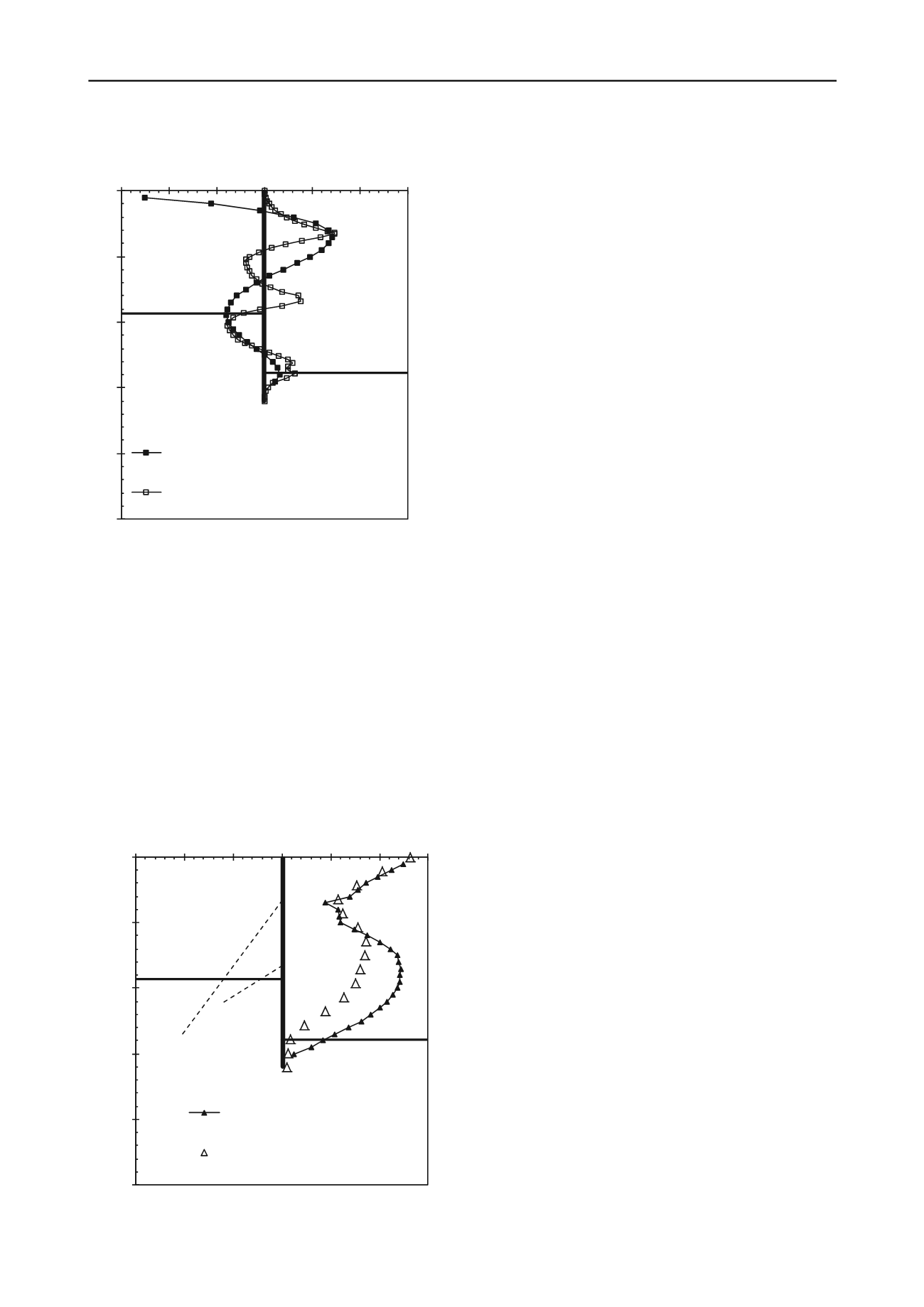
506
Proceedings of the 18
th
International Conference on Soil Mechanics and Geotechnical Engineering, Paris 2013
Proceedings of the 18
th
International Conference on Soil Mechanics and Geotechnical Engineering, Paris 2013
5 CONCLUSIONS
0
5
10
15
2
2
-600 -400 -200
0
200 400 600
Depth (m)
BendingMoment (kN/m)
In-wall inclinometer has an importation role in the monitoring
of shoring walls during and after excavation. Wall bending
moments can be estimated from the inclinometer measurements
except near the ground surface where the bending moments are
overestimated probably due to the error in double differentiation
of the wall deflection.
Both total and effective stress analyses should be used for
the design of shoring walls installed in the clayey soils. As
supported by the finite element back-analysis, the clayey soils
behave as undrained during excavation and as drained after
excavation. The finite element analysis confirmed that the time-
dependent deformations of shale rock during 11 months after
excavation could be up to 5 mm for 4.5 m excavation in the
shaly rock. The time-dependent deformation should be
considered in the shoring wall design.
0
5
Deducted from inclinometer readings (1 d after
excavation to bottom)
Computed (1 d after excavation to bottom)
ExcavationLevel
Bedrock surface
6 REFERENCES
Cao L.F. and Peaker S.M. 2011. Use of tieback in Southern Ontario.
64
th
Canadian Geotechnical Conference
, Toronto, Paper 175
Lo K.Y. 1989. Recent advances in design and evaluation of
performance of underground structures in rocks.
Tunnelling and
Underground Technology
27, 461-477.
0
5
10
15
20
25
-15 -10
-5
0
5
10
15
Depth (m)
Lateral Deflection (mm)
Inclinometer reading (11 m after
excavation to bottom)
Computed deflections (11 m after
excavation to bottom)
ExcavationLevel
Bedrock Surface
T ieback
Figure 5. Deduced and computed wall bending moments
clayey soils, and reduced prestressing for tiebacks. Figure 6
show the comparison of the computed and measured lateral
deflections. In this analysis, the E was taken as 80% of the
initial E; the effective
and cohesion for clayey fill were taken
as 30
o
and 3 kPa, respectively; the effective
and cohesion for
clayey till were taken as 32
o
and 7.5 kPa, respectively; and the
lower tiebacks were assumed to be de-stressed to 50% of the
initial prestressing. The computed lateral deflections within the
upper portion of the overburden are in a good agreement with
the inclinometer reading. However, there is a difference of up to
5 mm between the computed and measured deflections in the
lower portion of the overburden and the bedrock, which should
belong to the time-dependent deformation of the shaly rock as
the de-stressing of tiebacks or the consolidation of clayey soils
could not lead such deformation.
Poh T.Y., Goh A.T., Wong K.S., Wong I.H. and Poh K.B. 1999.
Determination of bending moments in diaphragm wall.
5
th
International Symposium on Field Measurements in Geomechanics
,
Singapore, 229-234.
PTI 1996.
Recommendations for prestressed rock and soil anchors
.
Post-Tension Institute, Phoenix.
West H.H. 1993.
Fundamentals of structural analysis
. John Wiley &
Sons, Inc.
Figure 6. Measured and computed wall deflections (11 months after
excavation)


